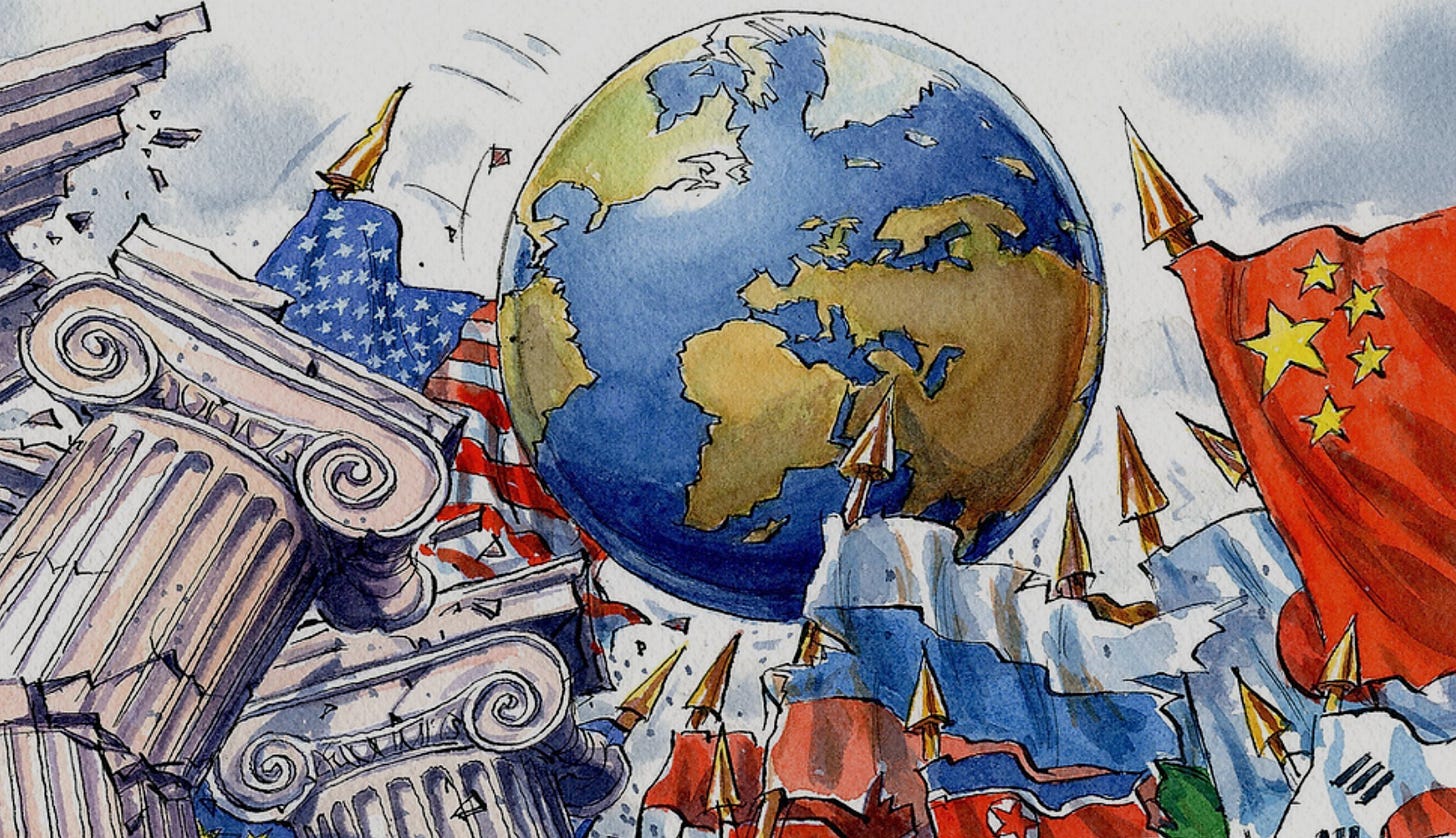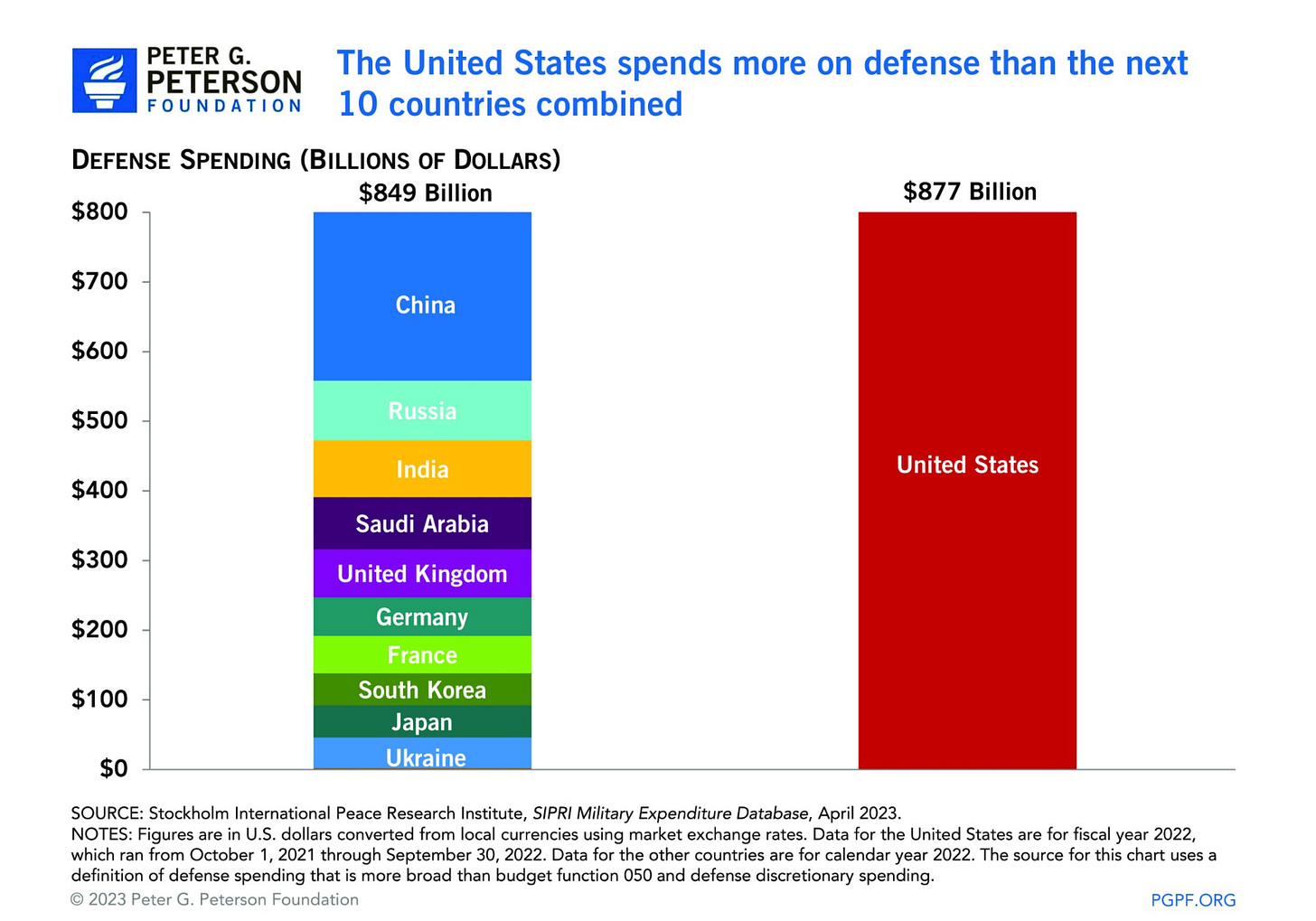The Unraveling of Empire: The End of the American Unipolar Moment
The Shift to Multipolarity, Explained
Introduction – the End of an Era
For years, we’ve examined the tectonic shifts in global power—how a new, multipolar world is emerging from the long shadow of U.S. dominance. While Western analysts often frame this transformation as a crisis, others see it as a necessary rebalancing. A return to sovereignty. A more just and equitable global order.
Yet, to understand where we are headed, we must understand what we’re leaving behind: the unipolar moment—the American-led global order that emerged after World War II. It was unprecedented in reach, ambition, and duration. But the signs of its decline are everywhere, and they can no longer be ignored. This is not so much about foreign competition but a collapse from within. Recognizing the emergence of multipolarity is about acknowledging the need to rebalance the global order, empower states, and support their economic and political sovereignty.
The Architecture of Hegemony – A Brief Retrospective
From the rubble of 1945, the United States redrew the global map. It forged alliances that spanned continents, made the U.S. dollar the backbone of global finance, created institutions to govern trade and law, and exported its model of democracy. For nearly 80 years, this system—dubbed Pax Americana—was the scaffolding upon which the post-war world was built.
Pax Americana: The Rise and Structure of American Global Dominance
After the devastation of World War II, the USSR had no choice but to focus on rebuilding itself while the United States emerged as the world's dominant power. This moment marked the beginning of what would come to be known as Pax Americana—a period of relative global stability maintained under American leadership, influence, involvement, and, often, control.
The foundation of Pax Americana was built on a combination of military strength, economic power, and ideological influence. The U.S. led the creation of global institutions such as the United Nations, International Monetary Fund (IMF), World Bank, and later the World Trade Organization (WTO)—each reinforcing a “rules-based order” centered solely on American interests and values. At the heart of this system was the Bretton Woods Agreement, which established the U.S. dollar as the global reserve currency, giving Washington extraordinary financial leverage.
Militarily, the U.S. established a vast global presence with alliances like NATO, bilateral pacts in Asia, and over 750 military bases worldwide. This network allowed it to deter adversaries, reassure allies, and enforce its geopolitical agenda, often under the banner of peacekeeping or “promoting democracy.”
Economically, the U.S. launched the Marshall Plan, investing billions in rebuilding Europe, thereby securing Western loyalty and fostering capitalist markets aligned with American industry. The postwar boom made the U.S. the engine of global growth. This position was reinforced by its control of trade systems and financial flows.
Crucially, Pax Americana was also an ideological project. The U.S. positioned itself as the defender of liberal democracy, free markets, and individual freedoms. Through cultural exports—films, technology, education—it gained not just power, but admiration. For much of the 20th century, the American model was the global standard.
However, this dominance was not eternal. The collapse of the Soviet Union briefly ushered in a “unipolar moment,” but the underlying structure of Pax Americana has since begun to erode. New powers are rising, global institutions are being challenged, and the moral authority of U.S. leadership has weakened.
Still, the legacy of Pax Americana remains deeply embedded in the modern world—a testament to how strategic power, economic systems, and ideology can together construct a global order.
But all hegemonies rest on three pillars: military might, economic supremacy, and ideological confidence. Today, all three are eroding—and fast.
Crumbling Might – The End of Military Dominance
The first fault line is military. The United States still maintains over 750 military bases globally, spending more on defense than the next ten countries combined. And yet, its power projection is no longer what it once was.
The wars in Iraq and Afghanistan, both wars of choice, have permanently tarnished America's image. They were not just failures—they were self-inflicted wounds. Billions spent, thousands of lives lost, and what remains is a deep mistrust from allies and adversaries alike. According to U.S. defense analysts, in simulated war games, the U.S. now consistently loses when going toe-to-toe with China.
“China’s hypersonic missiles can destroy all the US aircraft carriers in 20 minutes…In every war game conducted by the Pentagon, the US loses to China.”
- Pete Hegseth, Secretary of Defense.
A Fractured Economy – The Collapse of the Dollar Empire
The second pillar—economic supremacy—is on borrowed time.





